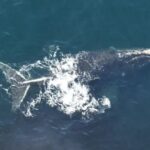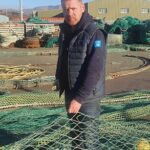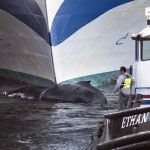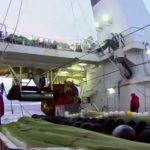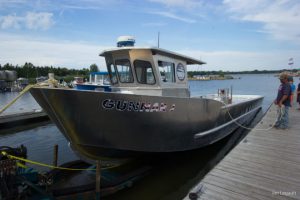Tag Archives: Port of Seattle
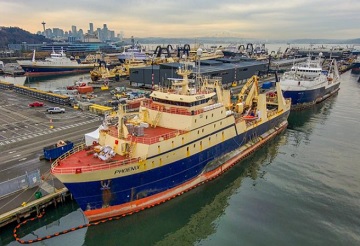
All About the Fishing Fleet at Terminal 91
The factory trawlers, or fish processing vessels, of the North Pacific Fishing Fleet are back in Seattle after four months of harvesting pollock in the Bering Sea and Gulf of Alaska. The docks at Terminal 91 are buzzing with activity as crews unload their recent harvest and prepare to set sail again in late May. For more than 100 years, the North Pacific Fish Fleet, homeported at Terminal 91 and Fishermen’s Terminal, has fed the world and the economies of the Pacific Northwest and state of Alaska. Our region supplies 13% of the total U.S. commercial fisheries harvest by value. Commercial fishing activities at the Port of Seattle generated more than $671.2 million in business output in 2017 and supported 7,200 jobs. Learn more about the North Pacific Fishing Fleet, photos, >click to read< 10:16
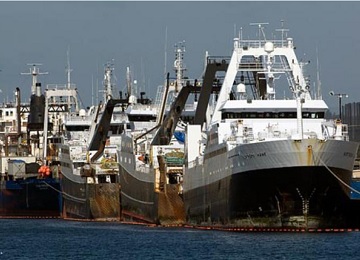
An inside look at Seattle’s fishing industry
This unique network of professionals, ranging from shipbuilders to pipe fitters to marine electricians and more helps fuel the local economy and offers a range of career options. When fishing fleets, based at the Port of Seattle’s Terminal 91 on the Seattle waterfront in Interbay, return laden with their catch, a single ship might carry fillet blocks, loin blocks, surimi, roe, fish meal and fish oil, says Kelli Goodwin, senior manager, Maritime Operations at the Port of Seattle. These products are separated and loaded into export carriers, on-site freezer cold storage, rail cars (for fish oil) or long-haul trucks for domestic distribution. “The next fish stick or fish fillet sandwich you eat, likely was caught by a vessel that calls Seattle home,” >click to read< 14:05
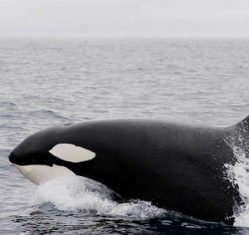
Seattle’s industrial waterfront remains a contamination challenge for orcas. What about Salmon?!
The Southern Resident orcas are often called some of the most contaminated marine mammals on earth. Their fat is filled with toxins like PCBs. When they don’t have enough to eat, they metabolize their fat and that poison ends up in their blood. Though outlawed decades ago, PCBs still remain in the sediment around Elliott Bay.,,, A lot of the toxic contamination issues that we have with our salmon can really be traced to the fact that the state of Washington is not enforcing the Clean Water Act to the extent that they should,” >click to read< Meanwhile, New study finds river wildlife contain cocaine, pharmaceuticals and pesticides in UK->click to read<10:07
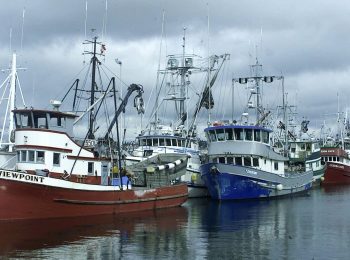
Seattle’s working waterfront: The Port of Seattle has a strategy for world-class maritime industries
Set aside the latest news about drone-delivered packages and consider the changes happening now in the ocean economy. More than 90 percent of the world’s trade travels over water, with total volume expected to triple by 2050. The global value of the ocean economy is expected to reach $3 trillion in the next three decades, with the largest gains coming in tourism. Fisheries provide an increasingly essential source of food, employment and revenue.,,, Maritime jobs offer well-paid and reliable careers and diversify the local economy. The Port of Seattle is seizing these benefits for our region. >click to read<16:57

Fishing Vessel Owners Marine Ways incorporates on March 28, 1919.
On March 28, 1919, Fishing Vessel Owners Marine Ways is incorporated. A group of halibut-schooner owners, who are also members of the Fishing Vessel Owners Association, form the new company because they are frustrated by a lack of shipyard capacity in Seattle. Their shipyard will build halibut schooners and dories and will repair, retrofit, and maintain all types of vessels. The yard is located at the Port of Seattle’s Fishermen’s Terminal, the homeport for the Seattle-based North Pacific and West Coast fishing fleets, which opened five years earlier. It will be a vital part of Fishermen’s Terminal and the maritime industry in Seattle over the next century. Photo’s, click here to read the story 19:08
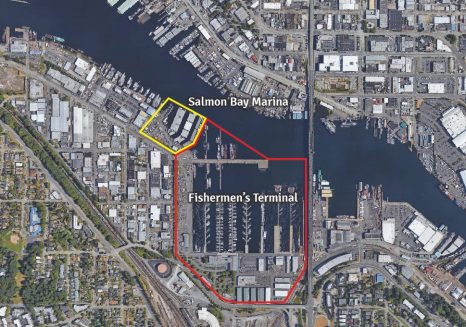
Port of Seattle buys Salmon Bay Marina
The Port of Seattle has purchased Salmon Bay Marina, a privately-owned operation on five acres just to the west of Fishermen’s Terminal. The price: $15.6 million. The Port said it bought the marina to protect maritime industrial land and support the growth of Fishermen’s Terminal. The Port has set a goal to double the size of the “commercial fishing business cluster” at Fishermen’s Terminal. click here to read the story 15:09
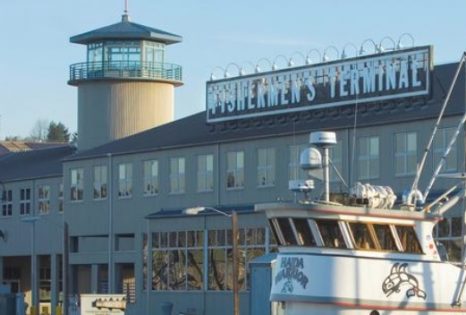
Port of Seattle plans $35 million Fishermen’s Terminal makeover to stem losses
The Port of Seattle has a $35 million plan to redevelop the iconic but unprofitable Fishermen’s Terminal in Ballard. Port officials hope the mix of new and renovated buildings will boost terminal revenue, allowing the public agency to fulfill its 100-year commitment to the fishing industry while remaining accountable to King County taxpayers. The plan calls for demolitions, new buildings and a reduction in public parking to reduce the $4.3 million in annual operating losses at the terminal, which is home to the Alaska fishing fleet. View 9 photos, click here to read the article 19:47
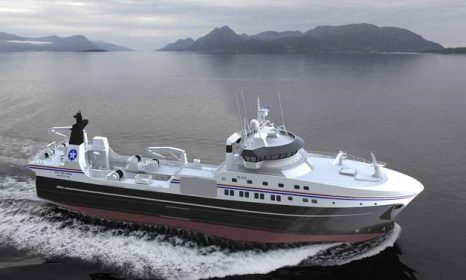
Our opportunity: Modernization of the North Pacific Fishing Fleet
The fishing fleet in the North Pacific and Bering Sea, much of which is homeported here, needs to be replaced. Leaders are pushing for Washington to get its share of that business. Seattle’s homeowners aren’t the only ones getting grayer. The fleet that is the backbone of Washington’s fishing industry is getting older, too. Vessels average 40 years old, although their ages vary widely. Of the 5,000 ships at work off Alaska, 414 of these federally permitted vessels are more than 58 feet in length. A total of 175 were built in the 1970s. Replacing them will be a mammoth undertaking, but the state could see big benefits if it captures some of the action. Mark Gleason of the Maritime Federation said, “Our members see this as a huge opportunity, for ports, shipowners, seafood companies, labor, shipyards, naval architecture firms… It’s one of the biggest opportunities to come to this region in maritime in decades.” Read the story here Read the 63 page McDowell Report Click here 17:59
Seattle’s aging fishing fleets provide hundred-million-dollar opportunity for shipbuilders
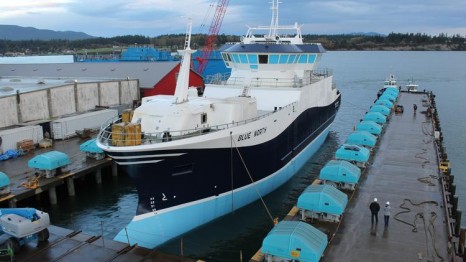 Some vessels in the Seattle-based North Pacific fishing fleet are more than 70 years old, and replacing them could bring hundreds of millions of dollars of work to regional shipyards. That, according to Port of Seattle Co-President Stephanie Bowma, is at the top of a list of maritime-industrial business possibilities for the region. “By some estimates, more than 2,000 boats need to built or remodeled, which is requiring hundreds of millions of dollars in capital investments, and hundreds of workers throughout our region to work on these vessels,” Read the article here 16:40
Some vessels in the Seattle-based North Pacific fishing fleet are more than 70 years old, and replacing them could bring hundreds of millions of dollars of work to regional shipyards. That, according to Port of Seattle Co-President Stephanie Bowma, is at the top of a list of maritime-industrial business possibilities for the region. “By some estimates, more than 2,000 boats need to built or remodeled, which is requiring hundreds of millions of dollars in capital investments, and hundreds of workers throughout our region to work on these vessels,” Read the article here 16:40


































